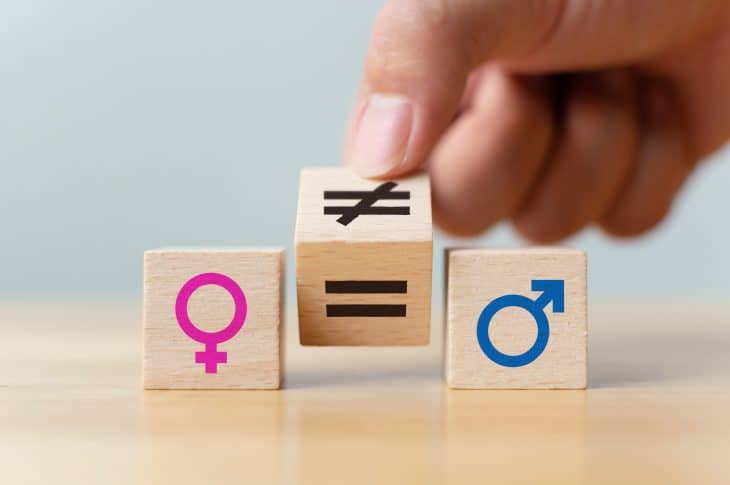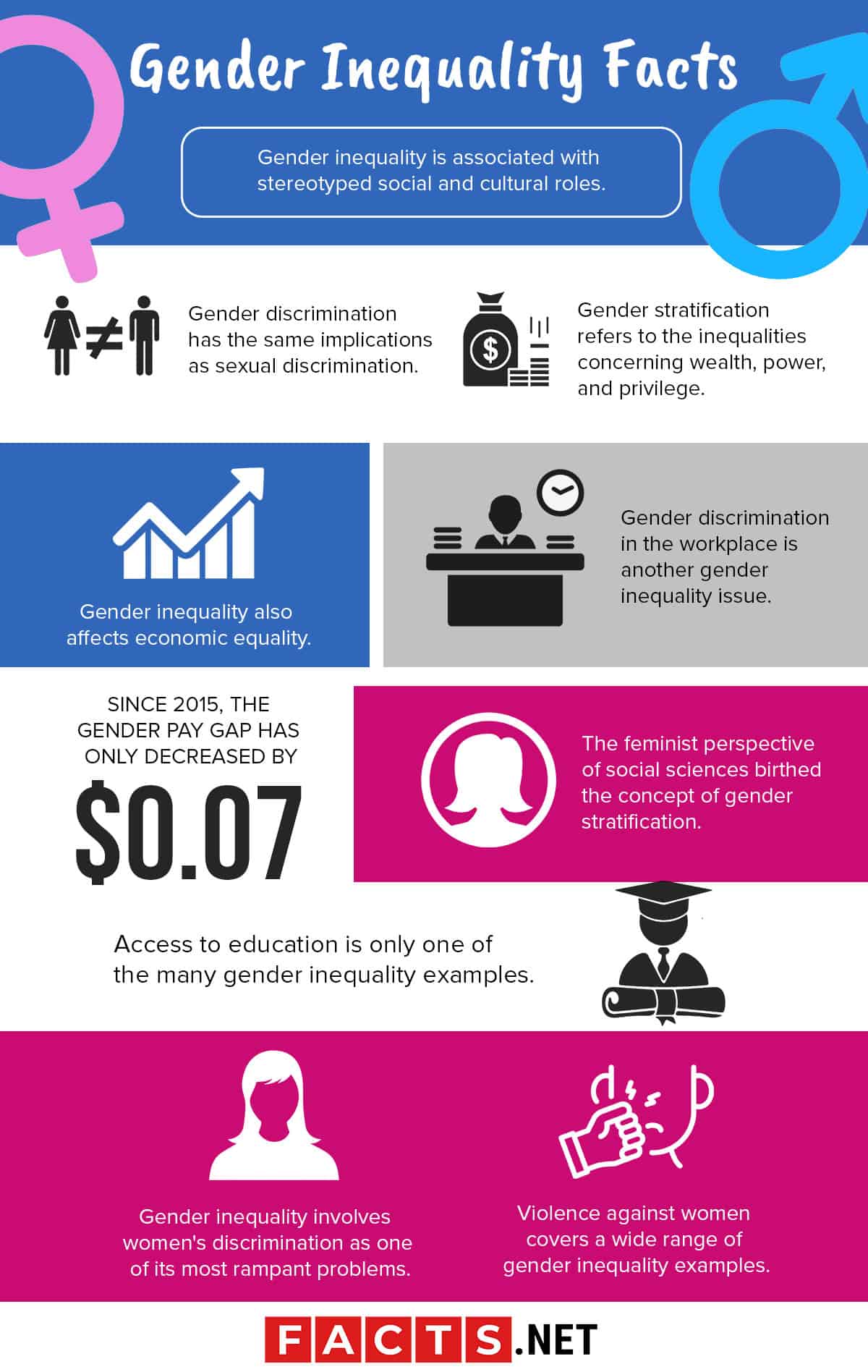
Gender inequality is as constant as the air. It’s not a matter of being unseen, but most choose to look the other way. Unfortunately, gender discrimination, especially women discrimination, remains to be the longest battle that society struggles to defeat. Take a closer look at this issue with these gender inequality facts.
- 18 countries legally allow husbands to prevent their wives from working.
- 39 countries lack equal inheritance rights among daughters and sons.
- 49 countries lack laws for the protection of women from domestic violence.
- 750 million girls and women across the globe got married before reaching age 18.
- In 30 countries, over 200 million girls and women have endured female genital mutilation (FGM).
- Women receive mostly unpaid work like housekeeping and caring for children and the elderly.
- Within the U.S. economy, women represent around half of the workforce of the country.
- Still, the overwhelming majority of the top earners are men.
- American women earn less than men in all industries, with the largest pay gaps among management positions.
- The construction sector has the smallest gender gap but only has 9% of women workers.
- In 2016, women full-time workers earned less than 81 cents for every dollar a man did.
- Fortune 500 firms only have 5% of women representatives.
- Males make up 69-82% executives and top managers at the top 5 U.S. investment banks.
- Only 52% of married women can freely decide about health care, sexual relations, and contraceptive use.
- Only 13% of agricultural landholders across the globe are women.
- South Korea has the widest gender pay gap where men earn 37% more than women.
- Luxembourg has the narrowest gender pay gap where men earn only 3.4% more than women.
- Over 100 countries worldwide have taken actions on gender equality budget allocations.
- Women from 46 countries now hold over 30% of national parliament seats in at least 1 chamber.
- In South Asia, the risk of girls marrying in childhood has dropped by more than 40% since 2000.
Gender Inequality Facts Infographics

Gender inequality is associated with stereotyped social and cultural roles.
The European Institute for Gender Equality defines the issue of gender inequality as the legal, social and cultural circumstances where sex or gender determine different rights for women and men. Further, it reflects upon the unequal access to certain rights and the assumption of systemic stereotypes.
Gender discrimination has the same implications as sexual discrimination.
It refers to any action that denies opportunities, privileges, or rewards to a person or a group because of gender. On the contrary, the term ‘reverse discrimination’ refers to males who claim to experience discrimination on the basis of gender.
Gender stratification refers to the inequalities concerning wealth, power, and privilege.
Emira Danaj defined gender as a principle of social structure representing a hierarchical, unequal division between men and women. However, gender issues such as gender stratification still persist today.

The feminist perspective of social sciences birthed the concept of gender stratification.
Hence, it is a relatively new idea originating from the 1970s within the science of sociology. Figures of unequal participation can illustrate the gender stratification of women in the incomes, labor market, politics, and others.
Gender inequality involves women's discrimination as one of its most rampant problems.
Further, women who experience discrimination also suffer from systemically hindered recognition and enjoyment. This issue disregards women’s marital status, human rights, and fundamental freedom in fields such as social, civil, or political.
Gender discrimination in the workplace is another gender inequality issue.
In general, this refers to the different treatment among employees or job applicants due to their sex or gender. It also involves an individual’s affiliations with an organization or group linked with particular sex or gender. Regardless of the different meanings of the words ‘sex’ and ‘gender,’ laws on workplace discrimination still use them interchangeably.
Gender inequality also affects economic equality.
Attributes that affect a person’s economic position include their gender, ethnic background, and whether they have disabilities or not. Moreover, economic inequality mainly reflects on people’s different positions in terms of income, pay, and wealth.
Since 2015, the gender pay gap has only decreased by $0.07.
Research from PayScale revealed that women are only making $0.81 for every $1 that a man makes. The uncontrolled gender pay gap takes the ratio of the earnings of women to men.
Access to education is only one of the many gender inequality examples.
Like a domino effect, gender discrimination further leads to illiteracy and economic independence. It can even go as far as women representation in government. Sadly, women are traditionally assigned a disproportionate amount of care work, such as housekeeping and motherhood.
Further, the time that women devote to such unpaid tasks directly and negatively impacts their workforce participation, hence their inability to foster economic independence.
Violence against women covers a wide range of gender inequality examples.
Outside the issue of sexual assault, women are systemically subjected to child marriage, human trafficking, and infant life expectancy. The deep and systemic prevalence of violence against women makes this problem one of the most pressing examples of gender inequality.

Was this page helpful?
Our commitment to delivering trustworthy and engaging content is at the heart of what we do. Each fact on our site is contributed by real users like you, bringing a wealth of diverse insights and information. To ensure the highest standards of accuracy and reliability, our dedicated editors meticulously review each submission. This process guarantees that the facts we share are not only fascinating but also credible. Trust in our commitment to quality and authenticity as you explore and learn with us.


